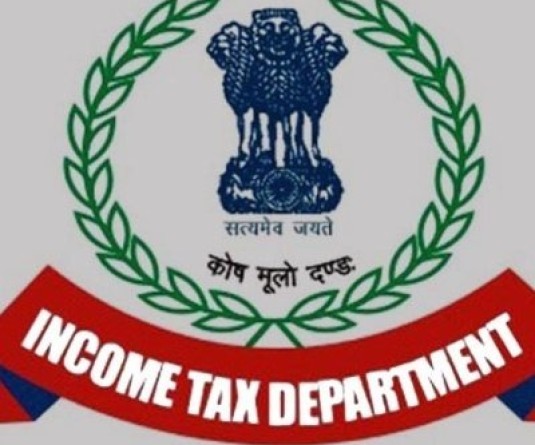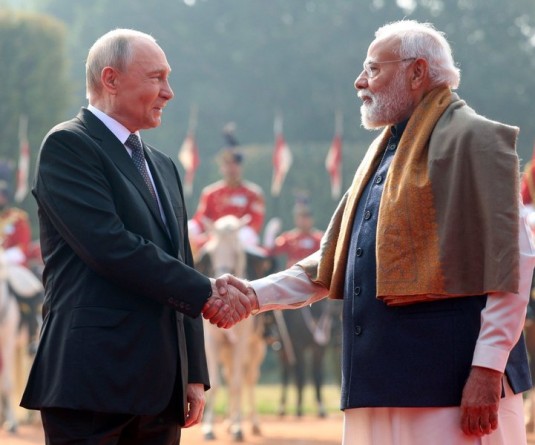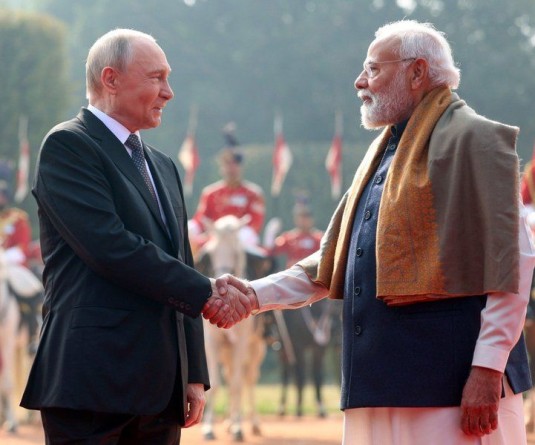
NEW Delhi, February 27 (Reuters): The government is likely to increase subsidies on food in a Feb. 28 budget, a populist move that hurts public finances but promises political dividends for a ruling coalition trying to cool disquiet over high inflation. Though the govt is moving away from its partly socialised economy after embracing free market reforms in the 1990s, removing subsidies has always been a tough call as they protect millions of poor voters who determine who governs.
Its policies have led to big stockpiles of rice and wheat, but the government has often wrestled with the question of how to distribute -- free handouts defer long-term solutions and erratic monsoons and global supplies raise risk in cutting stocks. As regional economies grapple with soaring inflation, the cost of food for families in Asia’s third-largest economy has risen in high double-digit percentage terms for months, prompting the use of export bans and lower import duties. Here are some facts about subsidies and expectation on the budget on food as well as main commodities:
FOOD
The government provides cheap grains and lentils to nearly 180 million poor families through a public distribution system that will cost nearly $12.6 billion in the year to the end of March 2011, about 1% lower than the previous year. The subsidy accounts for about 5% of the budget. When Finance Minister Pranab Mukherjee presents the budget, official sources say, he is expected to increase the food subsidy bill by more than 20% to about $15.5 billion with an eye on important state elections over the next year. The government is also likely to spend more on increasing efficiency of storage and transport of staples.
Excise or production tax on processed food could be cut. The government is drafting a food security law that would provide the poor with even cheaper grains, estimated to cost an additional $2 billion each year. But it is unlikely the budget would provide for it before the bill is passed.
Wheat and rice: The government may announce incentives such as an interest subsidy to boost storage capacity, routing such measures through Food Corp. of India, the main grain procurement agency. Overflowing bins have forced the government to store grains under tarpaulin, leading to some rot and decay.
Sugar: India, the world’s top consumer and the biggest producer behind Brazil, has yet to decide on exports of 500,000 tonnes of sugar under the Open General Licence (OGL) scheme, and the budget may touch upon this issue.
With focus now on containing high food prices, the government may announce steps to ease stock limits for traders and bulk consumers. India allows duty-free imports of sugar, despite bumper output in 2010/11.
Edible oil: The government may reduce the 7.5% import tax on refined vegetable oils in line with duty-free imports of crude edible oils. More than half of India’s edible oil demand is met by imports. The government may also explore options like curbing oilseed futures and cutting cooking oil taxes. India allows futures in edible oils and oilseeds and one option the government could explore as a further step to control prices is to curb futures trade as in 2008 when it briefly banned soyoil futures.
Lentils: India’s annual pulses demand is more than 18 million tonnes, a sixth of it met by imports. Duty-free imports could continue and such supplies could also be exempt from all taxes levied by state governments and various local bodies that vary between 1% and 2%. A 15% subsidy to state-run agencies for pulses imports is likely to continue. An export ban ordered in 2006 is also likely to continue.
METALS/MINERALS
Iron Ore: The federal government may increase export duty on iron ore to limit shipments and boost the availability for domestic steel makers. Exports are a contentious issue for the rapidly growing economy -- Karnataka state bans them.
Gold/Precious Metals: Searching for extra revenue, the government may raise customs duty on gold and silver. Import duty on gold in India, the world’s largest consumer of the yellow metal, was increased to 300 rupees per 10 grams in February last year. Import duty on silver was raised to 1,500 rupees per kg.
Non-Ferrous Metals: The federal government charges a flat 5% import duty on shipments of non-ferrous metals like copper, aluminium, lead, zinc, and tin, and including ores. The government may reduce the import duty to zero as record prices of industrial metals are hurting manufacturers of finished goods.
Coal: The federal government may reduce the import duty on coal to nil from 5.15% to increase shipments in the power-hungry nation.
Steel: The government may raise the import duty on hot rolled coils to 10% from 5% to encourage the growth of the domestic industry.
Its policies have led to big stockpiles of rice and wheat, but the government has often wrestled with the question of how to distribute -- free handouts defer long-term solutions and erratic monsoons and global supplies raise risk in cutting stocks. As regional economies grapple with soaring inflation, the cost of food for families in Asia’s third-largest economy has risen in high double-digit percentage terms for months, prompting the use of export bans and lower import duties. Here are some facts about subsidies and expectation on the budget on food as well as main commodities:
FOOD
The government provides cheap grains and lentils to nearly 180 million poor families through a public distribution system that will cost nearly $12.6 billion in the year to the end of March 2011, about 1% lower than the previous year. The subsidy accounts for about 5% of the budget. When Finance Minister Pranab Mukherjee presents the budget, official sources say, he is expected to increase the food subsidy bill by more than 20% to about $15.5 billion with an eye on important state elections over the next year. The government is also likely to spend more on increasing efficiency of storage and transport of staples.
Excise or production tax on processed food could be cut. The government is drafting a food security law that would provide the poor with even cheaper grains, estimated to cost an additional $2 billion each year. But it is unlikely the budget would provide for it before the bill is passed.
Wheat and rice: The government may announce incentives such as an interest subsidy to boost storage capacity, routing such measures through Food Corp. of India, the main grain procurement agency. Overflowing bins have forced the government to store grains under tarpaulin, leading to some rot and decay.
Sugar: India, the world’s top consumer and the biggest producer behind Brazil, has yet to decide on exports of 500,000 tonnes of sugar under the Open General Licence (OGL) scheme, and the budget may touch upon this issue.
With focus now on containing high food prices, the government may announce steps to ease stock limits for traders and bulk consumers. India allows duty-free imports of sugar, despite bumper output in 2010/11.
Edible oil: The government may reduce the 7.5% import tax on refined vegetable oils in line with duty-free imports of crude edible oils. More than half of India’s edible oil demand is met by imports. The government may also explore options like curbing oilseed futures and cutting cooking oil taxes. India allows futures in edible oils and oilseeds and one option the government could explore as a further step to control prices is to curb futures trade as in 2008 when it briefly banned soyoil futures.
Lentils: India’s annual pulses demand is more than 18 million tonnes, a sixth of it met by imports. Duty-free imports could continue and such supplies could also be exempt from all taxes levied by state governments and various local bodies that vary between 1% and 2%. A 15% subsidy to state-run agencies for pulses imports is likely to continue. An export ban ordered in 2006 is also likely to continue.
METALS/MINERALS
Iron Ore: The federal government may increase export duty on iron ore to limit shipments and boost the availability for domestic steel makers. Exports are a contentious issue for the rapidly growing economy -- Karnataka state bans them.
Gold/Precious Metals: Searching for extra revenue, the government may raise customs duty on gold and silver. Import duty on gold in India, the world’s largest consumer of the yellow metal, was increased to 300 rupees per 10 grams in February last year. Import duty on silver was raised to 1,500 rupees per kg.
Non-Ferrous Metals: The federal government charges a flat 5% import duty on shipments of non-ferrous metals like copper, aluminium, lead, zinc, and tin, and including ores. The government may reduce the import duty to zero as record prices of industrial metals are hurting manufacturers of finished goods.
Coal: The federal government may reduce the import duty on coal to nil from 5.15% to increase shipments in the power-hungry nation.
Steel: The government may raise the import duty on hot rolled coils to 10% from 5% to encourage the growth of the domestic industry.






